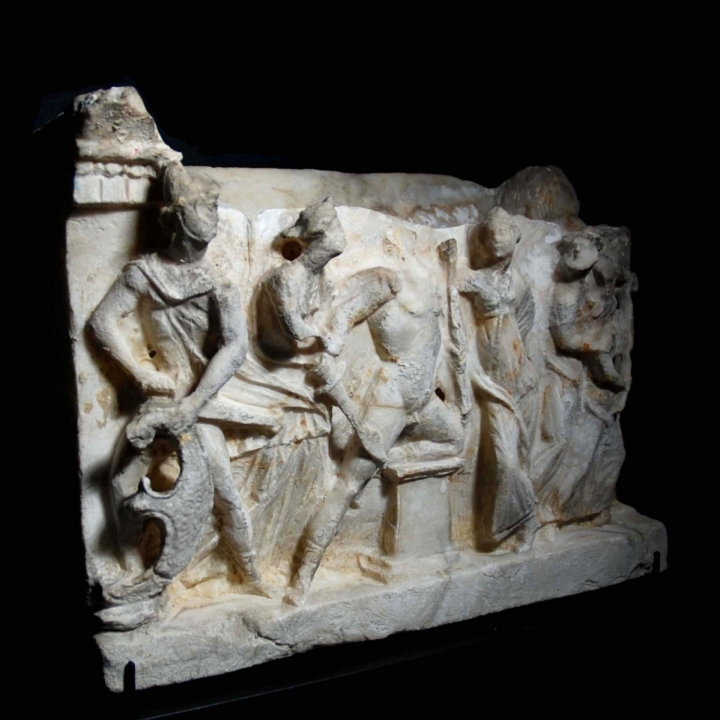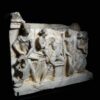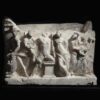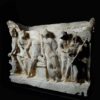Etruscan Alabaster Urn with the Recognition of Paris from the Trojan Cycle
Culture: Etruscan
Period: 2nd century B.C.
Material: Alabaster
Dimensions: 36 cm x 50.2 cm x 19 cm
Price: Sold
Ref: 4146
Provenance: Christie’s New York auction in July 1984, lot 236. Thence in the Hainta and Aaron Dechter collection prior to 1989. Exhibited at the California State University San Bernadino and California State University Northridge from 5 May to 2 June 1989 and from 26 February to 30 March 1990.
Condition: The upper rim of the urn and the lid missing. Wear and weathering as seen on the picture, head of Paris and the person on the far right missing. Still a large, very decorative object with excellent provenance.
Description: Multiple published alabaster cinerary urn with a high relief on the long side depicting the recognition of Paris as son of Priam from the Trojan cycle. Paris in the centre, his knee for protection on Zeus’ altar. In his right hand holding a sword, in his left the victory palm branch. From the left side his brother Deiphobus grabs him on his arm and shoulder. Paris, supposedly to be a shepherd, just won the offering games for a bull, which was his favourite animal, and therefore offended the royal family. As they want to hold him accountable he flees to the altar. On the right stands his sister Cassandra, a priestess with the gift to see the future, who recognizes her brother, who was lost as a child and raised by shepherds. On the far right possibly the bearded king Priam looking agitatedly at the scene and holding back another armed person. On the far left another warrior with helmet, bow and sword. The side walls smooth. The urn with its dynamic depiction is published in: K. Hamma (ed.) “The Dechter Collection of Greek Vases“, San Bernadino 1989, page 83, number 4. Mounted.






